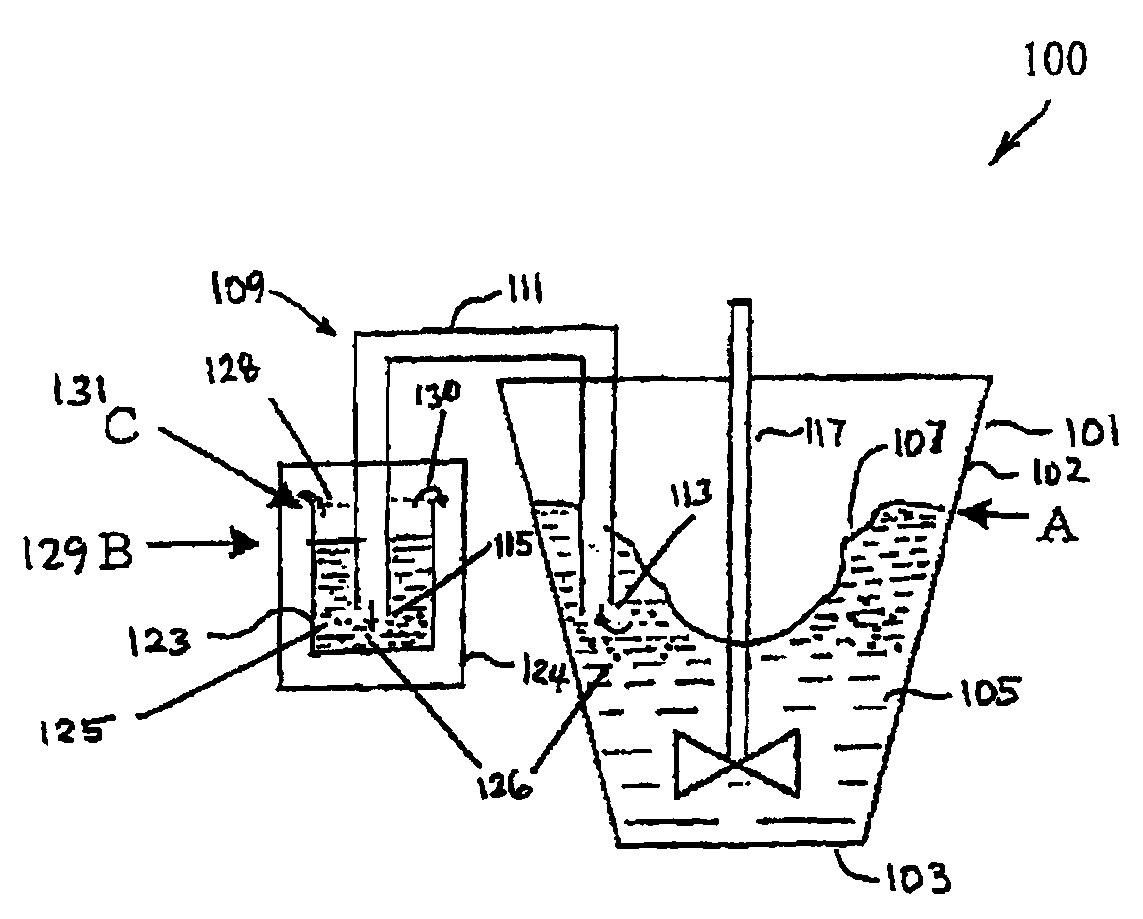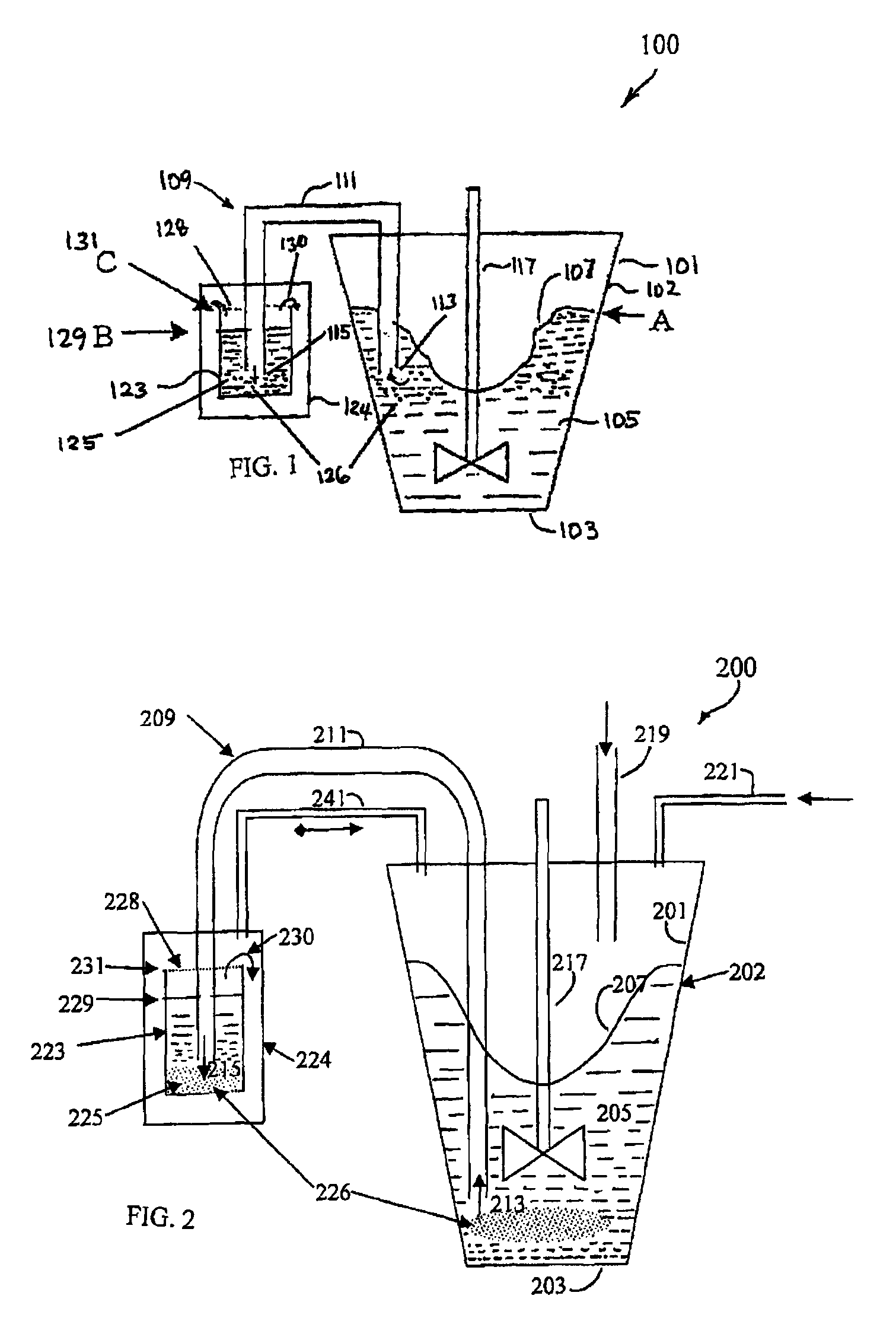Fine particle recovery methods for valve metal powders
a technology of valve metal powder and recovery method, which is applied in the field of production and recovery of fine valve metal powder, can solve the problems of finely divided material agglomeration, excessive fines, and tendency to pick up impurities
- Summary
- Abstract
- Description
- Claims
- Application Information
AI Technical Summary
Benefits of technology
Problems solved by technology
Method used
Image
Examples
Embodiment Construction
[0034]According to the present invention, a reduction process, such as a tantalum halide reduction process, is performed in a molten salt reaction vessel including an automatic siphon used to recover non-agglomerated fine metal particles, such as tantalum particles, produced by the reaction. The process uses a siphon for removal of individual tantalum particles from the reaction mixture that have grown or developed into primary particles of small size, and before they become undesirably coarse, agglomerated, or dendritic. Small sized primary particles of tantalum can yield high capacitive charge. Thus, they can be advantageously used as anodes for electrolytic capacitors and in other products. The small size primary particles of tantalum also have less opportunity to pick-up impurities before they are recovered with the siphon, as compared to agglomerates.
[0035]In processes of the present invention, fine metallic tantalum powder generally can be produced by the reduction of a tantal...
PUM
| Property | Measurement | Unit |
|---|---|---|
| particle size | aaaaa | aaaaa |
| weight % | aaaaa | aaaaa |
| particle size | aaaaa | aaaaa |
Abstract
Description
Claims
Application Information
 Login to View More
Login to View More - R&D
- Intellectual Property
- Life Sciences
- Materials
- Tech Scout
- Unparalleled Data Quality
- Higher Quality Content
- 60% Fewer Hallucinations
Browse by: Latest US Patents, China's latest patents, Technical Efficacy Thesaurus, Application Domain, Technology Topic, Popular Technical Reports.
© 2025 PatSnap. All rights reserved.Legal|Privacy policy|Modern Slavery Act Transparency Statement|Sitemap|About US| Contact US: help@patsnap.com


